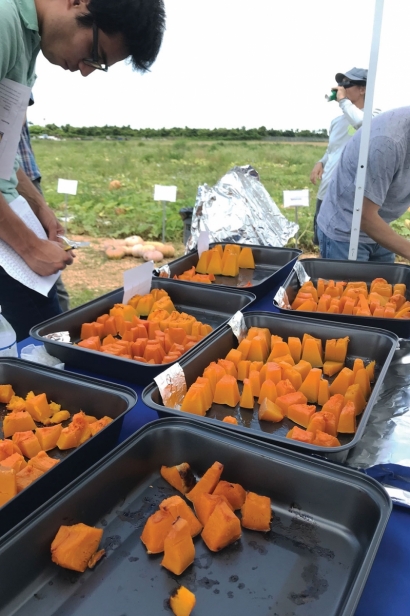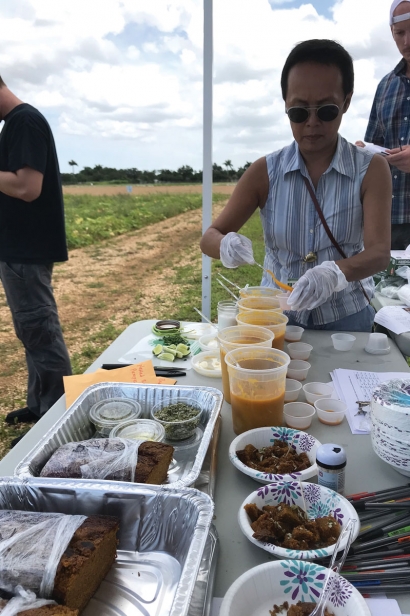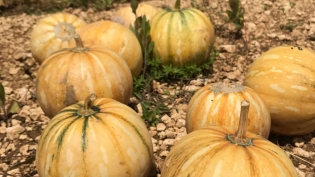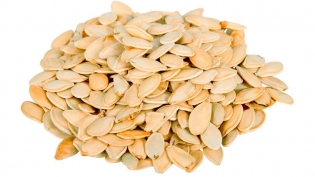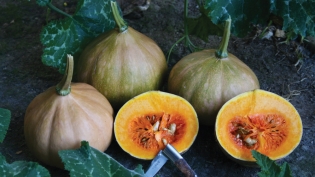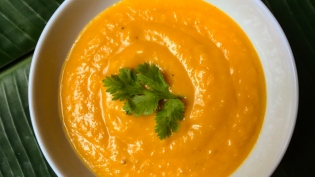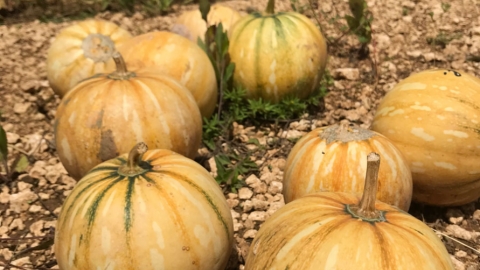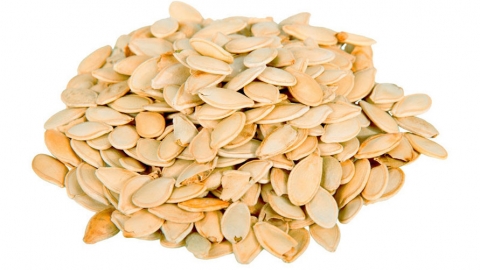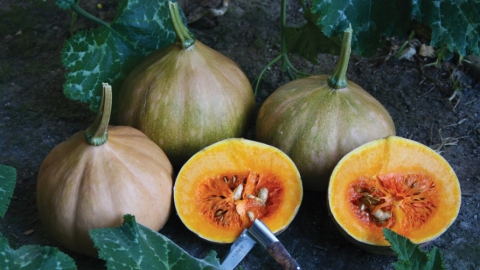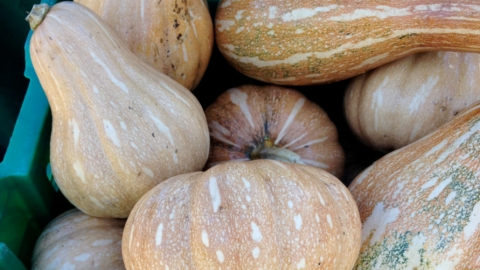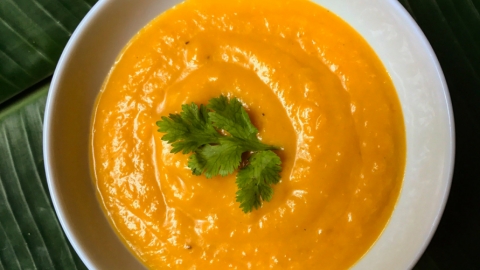Growing Better Pumpkins and Calabaza in South Florida
Are they colorful? Tasty? Easy to grow? Researchers in South Florida want to know.
Under the sweltering summer sun in the Redland, a small group gathered in a tent in the fields to taste 17 different types of pumpkin and calabaza and record their opinions.
The field day was held at the Tropical Research and Education Center (TREC) in Homestead, where plant scientists serve the Florida’s agricultural industry, looking for solutions in tropical fruit crop biotechnology, environmental stress, agroecology and other areas. One of their tasks is evaluating different plants for growers and, ultimately, consumers.
“As a plant breeder, one of the most important decisions I make is on which plants to advance in the breeding program,” says TREC’s Dr. Geoffrey Meru. “I make plant selections based on a number of factors including yield, fruit quality (flavor, texture, sweetness, size, color) and resilience to biotic and abiotic stress.”
For participants, samples varied in color (pale melon to intensely orange), fiber (stringy to smooth), moisture (watery to dry) and flavor (insipid to sweet). The highest-ranking choices make it through to the next round, says Dr. Meru. Researchers also want to find cultivars that are attractive for farmers. “Growers look for high-yielding, superior quality (flesh sweetness, texture, flavor, color) in calabaza cultivars that can withstand the hot, humid and wet conditions of South Florida,” he says.
Based on the data collected at the event, highly ranked lines will be tested for fruit quality and yield in upcoming growing seasons. It will take four to six years before TREC release calabazas cultivars adapted to South Florida and other parts of the state that offer high yields and top quality for consumers.
Pumpkins and Calabazas in South Florida
In South Florida, these members of the Curcubit family may be called squash, calabaza or pumpkin, and include pepo, moschata, mixta and maxima. All have coarse, strongly flavored flesh and hard rinds. Many gardeners save seeds for the following season.
Some varieties you may see in the farmers markets include:
Seminole pumpkin – A staple of Native Americans, these climbing vines grew in the Everglades, producing small, sweet fruits that store well.
Calabaza or tropical pumpkin – Also known as Cuban pumpkin or Cuban squash, fruits weigh 5-12 pounds.
Jamaican pumpkin – Prized in the Caribbean, these fruits are popular in stews and soups.
Plant pumpkin or calabaza seeds in July for harvest in Halloween – plants need three months from seeding to harvest. Use lots of compost. They’re pollinated by bees. If you want large pumpkins, remove all but two on the vine. Whole fruits store well in a cool space.




